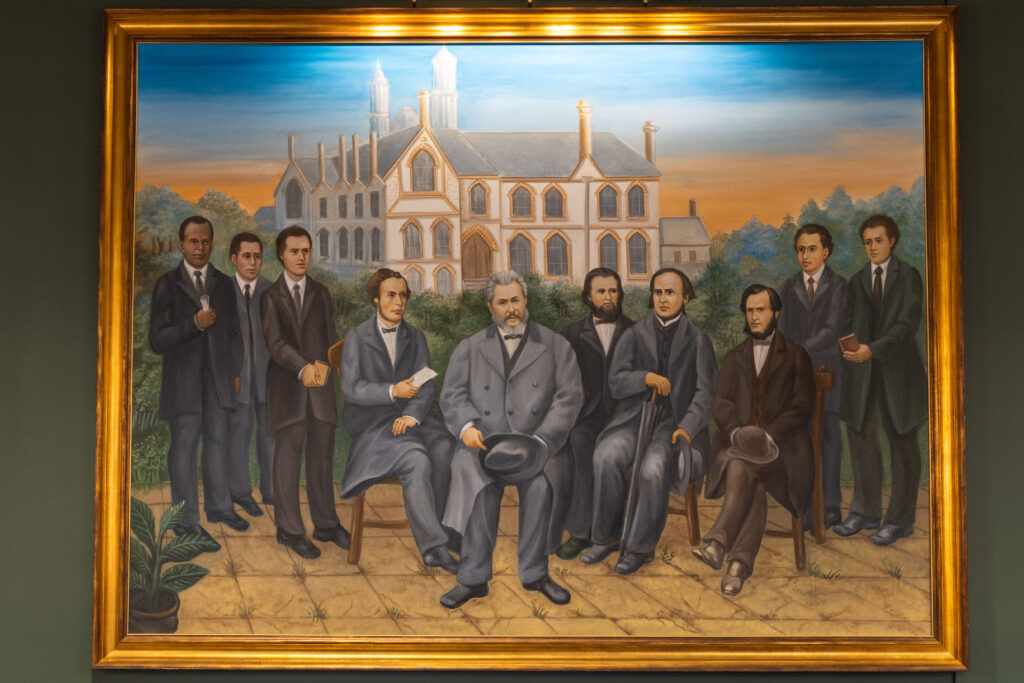
Spurgeon believed that pastoral training was part of the pastor’s job description. Just as Paul commanded Timothy to train other preachers and teachers (2 Timothy 2:2), so “one minister brings another to Christ, and then charges that other to train other preachers and teachers to carry on the blessed work of evangelization.” Amid all the pressures of pastoral ministry, when the opportunity arose, Spurgeon devoted himself to training future pastors.
This began initially with his first student, T. W. Medhurst. Over time, more and more came to study with him. These young men had already been preaching and had seen the fruit of conversions. But to further prepare them for ministry, Spurgeon took them under his wing for theological and pastoral training. Since most of them came from poorer backgrounds, he paid for their room & board, tuition, and books, and he gave precious time to mentoring them. Over time, the number of men studying with Spurgeon grew from 2 to 4 to 8 to 16. From 1856 to 1861, Spurgeon covered these expenses through the sale of his sermons and books in America.
However, in 1860, due to his comments about his opposition to slavery, his sales in America plummeted. Spurgeon thought that his pastoral training was coming to an end. In May of 1861, the elders and deacons brought this matter to the congregation, and the congregation voted unanimously to adopt the Pastors’ College as a ministry of the church and to support that work on a regular basis. The College would now be established on a solid financial basis and enter a new phase of fruitful pastoral training.
With the support of the entire church, Spurgeon was able to take on many more students, at times as much as 100 in any given semester. The main qualification for studying at the Pastors’ College was a divine call to preach, as evidenced by the conversion of sinners under one’s preaching. Once you entered the Pastors’ College, you would receive a rigorous course of education in Greek, Hebrew, Latin, biblical studies, theology, history, classics, preaching, logic, and more. Additionally, all the students were immersed in a living and working local church. Students often lived with an elder or deacon of the church. They actively participated in the congregational meetings and worship gatherings. They strategized with other members of the church on evangelism and new church plants. And they watched their pastor shepherd and lead the church, week after week. Over his lifetime, over 900 men were trained out of the Pastors’ College, and they went on to serve as church planters, evangelists, missionaries, and more, serving in all parts of the world.
In all of this, Spurgeon’s goal was not simply to train students but to plant and revitalize churches. During Spurgeon’s lifetime, the number of Baptist churches in England doubled because of these graduates. Dozens of churches were planted out of the Metropolitan Tabernacle, as Spurgeon freely sent resources, members, and leaders to support new work. Many Baptist churches throughout England were also strengthened, as students took dying churches and helped to revitalize them, just as their pastor had done. As the years went on and graduates were sent out, Spurgeon rejoiced to see the growth of a network of theologically robust, like-minded churches.
The lesson of the college is that the gospel advances through churches. Churches are called to train the next generation of pastors and to see the gospel advance through more faithful churches.
Things to see:
- Lectures to My Students
- Spurgeon’s writing desk
- Notebooks of Pastors College student, R. Hughes